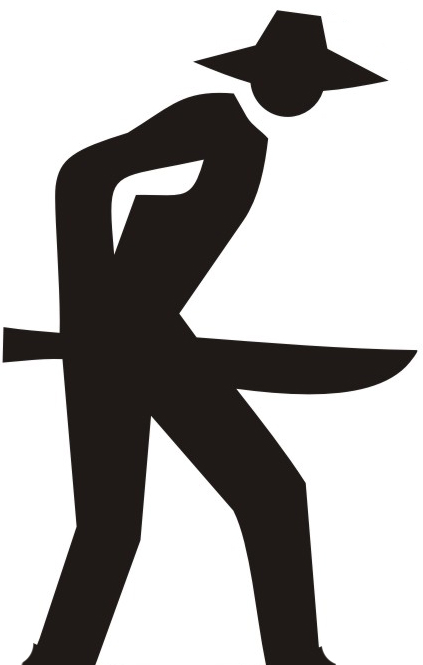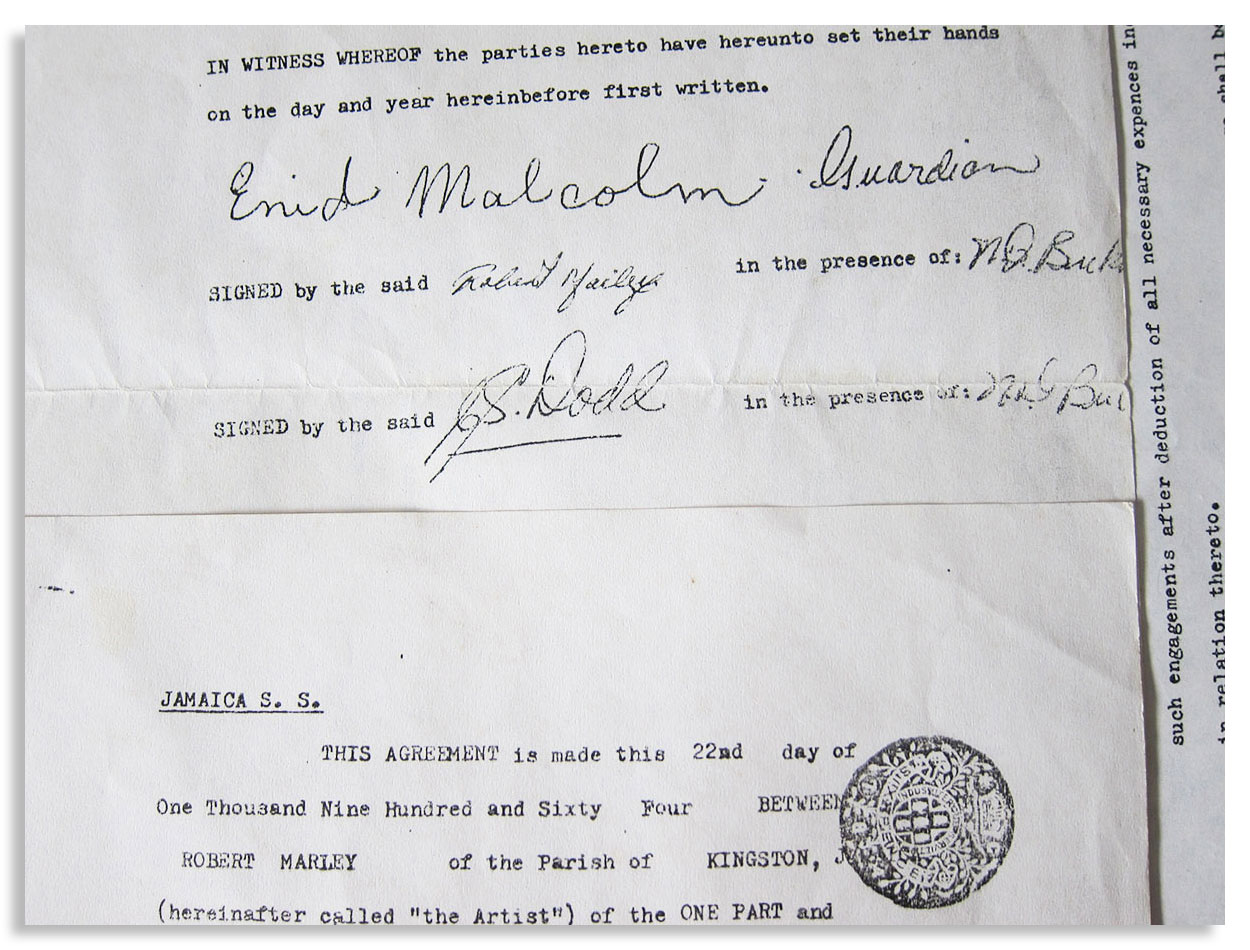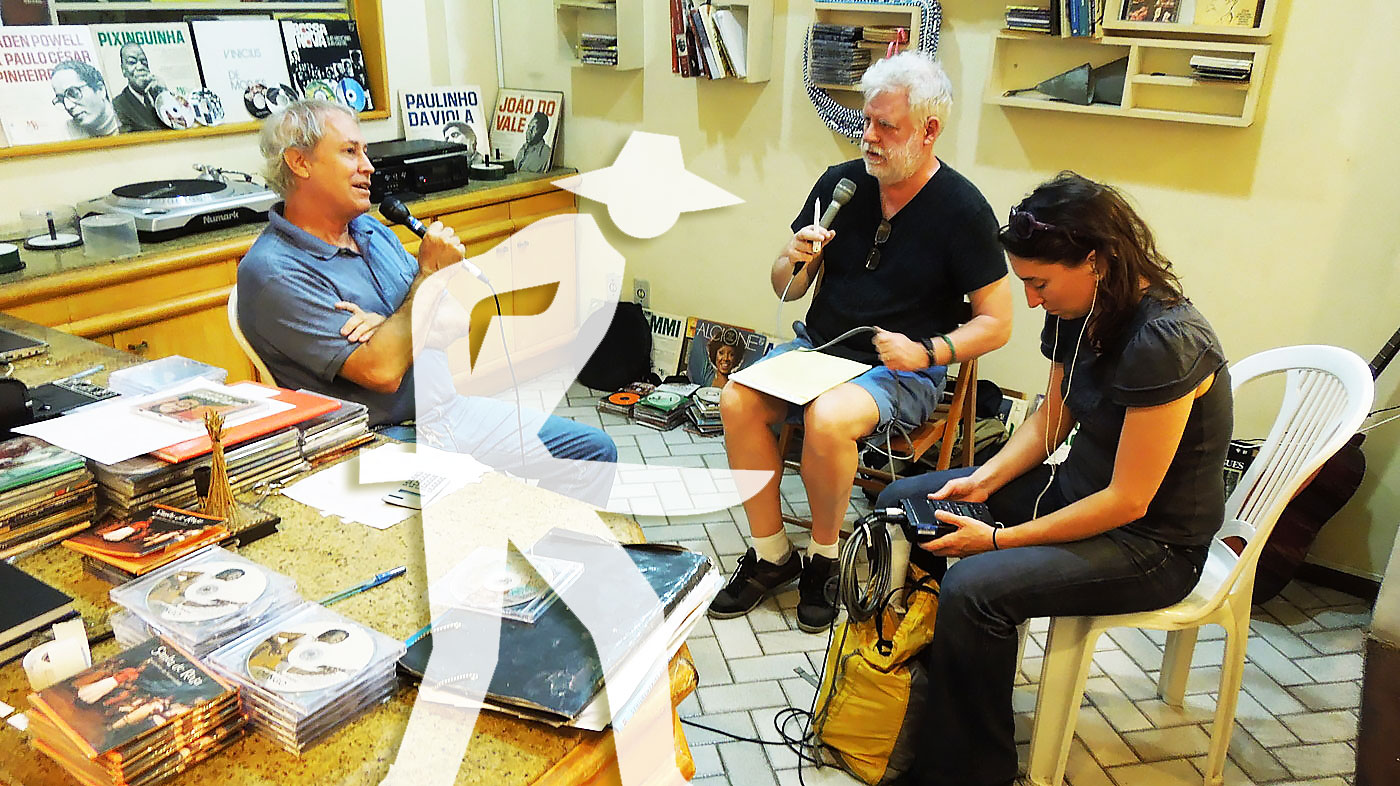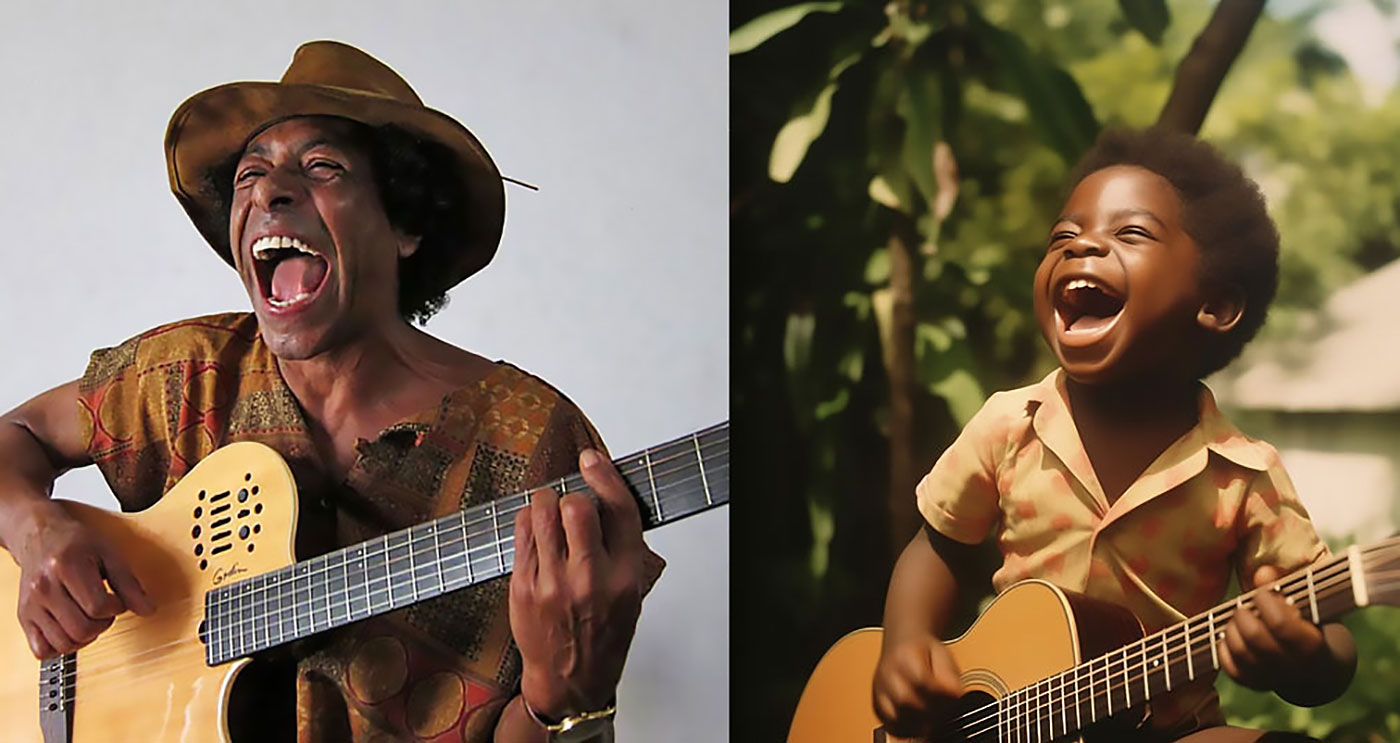CURATION
- from this page: by Matrix
Network Node
- Name: Tito Oliveira
- City/Place: Salvador, Bahia
- Country: Brazil
- Hometown: Castro Alves, Bahia
Current News
-
What's Up?
Ritmos Afro-Brasileiros na Bateria - Tito Oliveira
O livro se divide em quatro partes, nelas estão alguns dos ritmos do universo afrobaiano: Vassi, Ijexá, Aguerê e Sambas, sendo que o Samba esta dividido em Kabila, Samba-de-roda e Samba Reggae. Foram enfatizados os exemplos em diferentes seções para maior compreensão da clave de cada ritmo proposto no livro. Os textos são concisos, pois o foco são os grooves escritos de forma bastante clara. O CD traz os áudios desses grooves. Quero compartilhar, para maior alcance, minha convicção na crença que a música afro-baiana tem espaço de mercado e é um produto poderoso, de qualidade e variedade quase infinita. Um bom groove a todos!
Desde sempre, sou fascinado pelos ritmos da música ancestral afro baiana. Através do meu amadurecimento prossional e da minha colheita de informações rítmicas por meio de amigos Alabês, parceiros de profissão que foram gerados e se alimentam dessa fonte rica de conhecimentos, como Luizinho do Jêje, Gabi Guedes, Iuri Passos e meu professor e maestro Letieres Leite, venho pesquisando e adaptando estes ritmos à minha maneira de senti-los, interpretá-los e concebê-los na bateria.
Há um bom tempo, venho tentando passar minhas ideias da cabeça para o papel. Então, convidei meus amigos Marcos Bezerra (músico e pesquisador), Luis Claúdio Nunes e Henrique Duarte que abraçaram meu projeto com muito carinho e profissionalismo. Juntando os ingredientes com coerência, formatamos o livro que tem como diferencial “o meu fazer“, com um material ainda pouco difundido por parte dos músicos em geral.
Life & Work
-
Bio:
Tito Oliveira nasceu em 1970, em Castro Alves, Bahia.
A música fez parte da sua vida desde a infância. Filho de músico teve como inspiração a figura de seu pai Sr. Oliveira, saxofonista e proprietário da Banda Oliveira, uma das mais importantes bandas de baile da Bahia. Aos 13 anos começou a tocar bateria e com 15 ingressou na banda da família.
O período em que esteve na Banda Oliveira foi de grande proveito para sua formação musical. Segundo suas palavras “banda de baile é uma ótima escola”.
Paralelamente, continuou seus estudos autodidata buscando sempre as informações em métodos de técnicas, independência conseguida com muita dificuldade e ouvindo os grandes mestres da bateria.
Também acompanhou em shows e turnês artistas como Daniela Mercury, Carlinhos Brown, João Donato, Omara Portuondo, Rosa Passos, Jorge Vercillo, Elba Ramalho, Luciana Mello, Guilherme Arantes, Ed Motta, Mart’nália, Margareth Menezes, Flávio Venturini, Saulo Fernandes, Luis Caldas, Geronimo, Lazzo Matumbi, Paula Lima, Roberta Sá, Alaíde Costa, Rosa Maria e Daúde. Intregou-se a banda base do Festival Black 2 Black “Tributo a Miriam Makeba”, no Rio de Janeiro em 2013, onde acompanhou grandes elenco nacionais e estrangeiros tais como Gilberto Gil, Alcione; Atualmente integra o grupo Letieres Leite & Quinteto e Margareth Menezes.
Em 2014, Tito Oliveira lançou o Livro Ritmos Afro-Brasileiros na bateria e vem ministrando com sucesso aulas e workshop por universidades e escolas importantes no Brasil e EUA, como: EMSP (Escola de Música do Estado de São Paulo) , Conservatório e Faculdade de Música Souza Lima – SP, Conservatório de Tatui – Tatui SP, Unirio- RJ, UFBA (Universidade Federal da Bahia)- BA, Escola de Música da UFRN- Natal-RN, Berklle College of Music – Boston, MA / EUA, NYU New York University – New York/ EUA, University of Georgia/ EUA, Georgia State University – Atlanta/ EUA, University of Southern Mississipi – Mississipi / EUA.
Tito Oliveira participou de gravações de CD de vários artistas com projeção nacional e internacional como: Ivete Sangalo, Saulo Fernandes, Aline Calixto, Geronimo, Daniela Mercury, Jau, Margareth Menezes, Lazzo Matumbi, Arthur Maia, Carlinhos Brown e outros.
Tito Oliveira mantém parcerias com Zildjian, Drum Pads, Staner, Roland Brasil,Pearl Brasil,Evans, Electro Voice,Vic Firth, Urbann Boards.
ENGLISH
Tito was born in 1970, in Bahia, Brazil. He is a drummer, producer, and a clinician in Afro-Brazilian rhythms. Tito started playing drums when he was a child. His inspiration and talent came from his father, a saxophone player and producer of “ The Oliveira’s Band” (one of the most respected bands from Bahia).
Tito has recorded and toured with Ivete Sangalo, João Donato, Carlinhos Brown, Daniela Mercury, Elba Ramalho, Margareth Menezes, and many others. As a clinician, his book “Afro-Brazilian Rhythms For Drum Kit” is known and valued as material with rare information about the culture of the Afro-Brazilian rhythms.
Tito promoted workshops applying his book in many different places like Berklee College of Music – Boston; 247 Drum in Winchester – Massachusttes; NYU New York University – New York; 800 East Studios – Atlanta; Georgia State University – Atlanta; University of Georgia – Atlanta at The University of Southern Mississippi he gave a show and workshop together with Dr. John Wooton, Dr. Lawrence Panella, Vincent D’elia, John Grant, Taciane Grant, Ismael Brandão, and Julian Pernett.
Contact Information
- Whatsapp: titooliveira.oficial
Media | Markets
The Matrix is a small world network. Like stars coalescing into a galaxy, creators in the Matrix mathematically gravitate to proximity to all other creators in the Matrix, no matter how far apart in location, fame or society. This gravity is called "the small world phenomenon". Human society is a small world network, wherein over 8 billion human beings average 6 or fewer steps apart. Our brains contain small world networks...
![]() Wolfram MathWorld on the Small World Phenomenon
Wolfram MathWorld on the Small World Phenomenon
![]() Matemática Wolfram sobre o Fenômeno Mundo Pequeno
Matemática Wolfram sobre o Fenômeno Mundo Pequeno
"In a small world, great things are possible."

It's not which pill you take, it's which pathways you take. Pathways originating in the sprawling cultural matrix of Brazil: Indigenous, African, Sephardic and then Ashkenazic, European, Asian... Matrix Ground Zero is the Recôncavo, contouring the Bay of All Saints, earthly center of gravity for the disembarkation of enslaved human beings — and the sublimity they created — presided over by the ineffable Black Rome of Brazil: Salvador da Bahia.
("Black Rome" is an appellation per Caetano Veloso, son of the Recôncavo, via Mãe Aninha of Ilê Axé Opô Afonjá.)
"Dear Sparrow: I am thrilled to receive your email! Thank you for including me in this wonderful matrix."
—Susan Rogers: Personal recording engineer for Prince, inc. "Purple Rain", "Sign o' the Times", "Around the World in a Day"... Director of the Berklee Music Perception and Cognition Laboratory
"Thanks! It looks great!....I didn't write 'Cantaloupe Island' though...Herbie Hancock did! Great Page though, well done! best, Randy"
"We appreciate you including Kamasi in the matrix, Sparrow."
—Banch Abegaze: manager, Kamasi Washington
"This is super impressive work ! Congratulations ! Thanks for including me :)))"
—Clarice Assad: Pianist and composer with works performed by Yo Yo Ma and orchestras around the world
"Dear Sparrow, Many thanks for this – I am touched!"
—Julian Lloyd-Webber: UK's premier cellist; brother of Andrew Lloyd Webber (Evita, Jesus Christ Superstar, Cats, Phantom of the Opera...)
"Thanks, this is a brilliant idea!!"
—Alicia Svigals: World's premier klezmer violinist
Developed here in the Historic Center of Salvador da Bahia ↓ .
![]() Bule Bule (Assis Valente)
Bule Bule (Assis Valente)
"♫ The time has come for these bronzed people to show their value..."
Production: Betão Aguiar
MATRIX MODUS OPERANDI
Recommend somebody and you will appear on that person's page. Somebody recommends you and they will appear on your page.
Both pulled by the inexorable mathematical gravity of the small world phenomenon to within range of everybody inside.
And by logical extension, to within range of all humanity outside as well.
MATRIX (PARDAL)
I'm Pardal here in Brazil (that's "Sparrow" in English). The deep roots of this project are in Manhattan, where Allen Klein (managed the Beatles and The Rolling Stones) called me about royalties for the estate of Sam Cooke... where Jerry Ragovoy (co-wrote Time is On My Side, sung by the Stones; Piece of My Heart, Janis Joplin of course; and Pata Pata, sung by the great Miriam Makeba) called me looking for unpaid royalties... where I did contract and licensing for Carlinhos Brown's participation on Bahia Black with Wayne Shorter and Herbie Hancock...
...where I rescued unpaid royalties for Aretha Franklin (from Atlantic Records), Barbra Streisand (from CBS Records), Led Zeppelin, Mongo Santamaria, Gilberto Gil, Astrud Gilberto, Airto Moreira, Jim Hall, Wah Wah Watson (Melvin Ragin), Ray Barretto, Philip Glass, Clement "Sir Coxsone" Dodd for his interest in Bob Marley compositions, Cat Stevens/Yusuf Islam and others...
...where I worked with Earl "Speedo" Carroll of the Cadillacs (who went from doo-wopping as a kid on Harlem streetcorners to top of the charts to working as a janitor at P.S. 87 in Manhattan without ever losing what it was that made him special in the first place), and with Jake and Zeke Carey of The Flamingos (I Only Have Eyes for You)... stuff like that.

Yeah this is Bob's first record contract, made with Clement "Sir Coxsone" Dodd of Studio One and co-signed by his aunt because he was under 21. I took it to Black Rock to argue with CBS' lawyers about the royalties they didn't want to pay (they paid).
MATRIX MUSICAL
I built the Matrix below (I'm below left, with David Dye & Kim Junod for U.S. National Public Radio) among some of the world's most powerfully moving music, some of it made by people barely known beyond village borders. Or in the case of Sodré, his anthem A MASSA — a paean to Brazil's poor ("our pain is the pain of a timid boy, a calf stepped on...") — having blasted from every radio between the Amazon and Brazil's industrial south, before he was silenced. The Matrix started with Sodré, with João do Boi, with Roberto Mendes, with Bule Bule, with Roque Ferreira... music rooted in the sugarcane plantations of Bahia. Hence our logo (a cane cutter).
A Massa (do povo carente) / The Masses (of people in need)

-
Add to my PlaylistA Massa - Raymundo Sodré (7,093 plays)
-
Add to my PlaylistSina de Cantador - Raymundo So... (6,909 plays)
-
Add to my PlaylistMagnetismo - Raymundo Sodré ... (6,353 plays)
-
Add to my PlaylistSacando a Cana - Raymundo Sodr... (5,957 plays)
-
Add to my PlaylistMêrêrê - Raymundo Sodré (5,465 plays)
-
Add to my PlaylistJardim do Amor - Raymundo Sodr... (4,677 plays)
-
Add to my PlaylistDebaixo do Céu - Raymundo Sodr... (4,151 plays)
-
Add to my PlaylistDesejo de Amar - Raymundo Sodr... (3,861 plays)
-
Add to my PlaylistOração pra Yá Oxum - Raymundo ... (3,741 plays)
-
Add to my PlaylistYá África - Raymundo Sodré (3,509 plays)
-
Add to my PlaylistMeu Rio, Cadê o Papel - Raymun... (3,177 plays)
-
Add to my PlaylistCasa de Trois - Raymundo Sodré... (2,896 plays)
-
Add to my PlaylistMulher é Laço que Prende o Coração do Vaqueiro - R... (2,556 plays)

























































































































































































































































































































































































































































